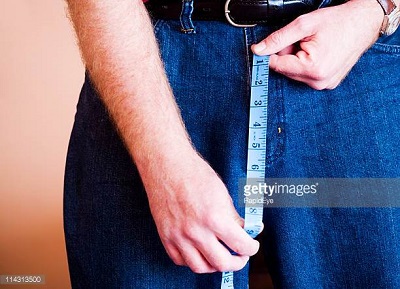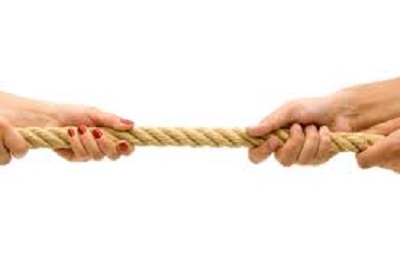Does Size matter?
 For many men around the world, one very intimate subject has often been a source of anxiety: the size of their genitals. These worries are fueled by many sources, ranging from widespread misconceptions about typical penis size, popular overemphasis on the importance of this measure, and cultural views of genital size as a sign of personal masculinity. Even the word “manhood” itself is sometimes used as slang for a man’s penis.
For many men around the world, one very intimate subject has often been a source of anxiety: the size of their genitals. These worries are fueled by many sources, ranging from widespread misconceptions about typical penis size, popular overemphasis on the importance of this measure, and cultural views of genital size as a sign of personal masculinity. Even the word “manhood” itself is sometimes used as slang for a man’s penis.
Clearly, many people do believe that size matters – but we decided to take a closer look. In what ways does penis size matter? Who feels it matters the most, and how has this influenced male self-image? Ultimately, do men really have that much to worry about?
Despite the increasing openness in the way we approach sex and sex related topics, plenty of people are poorly educated about sexuality. A very common worry the majority of men have is whether their penis is “the right size” or “big enough,” while some women tend to wonder whether “bigger is better.” However, penis size seems to be a bigger concern for the guys.
The penis is an important body part for sex that can be a source of pleasure and arousal, as well as anxiety and insecurity, for men and their partners alike.
Concerns about the penis may include its size, the direction in which it points, as well as a host of sexual function issues, such as erectile ability and ejaculation. Many men wish that they had more control over some or all of these issues. But while some modifications can be helpful, concerns about the penis are often more a matter of perception than changing anything physically.
It’s important for men to be knowledgeable about what’s normal for the penis and the role it plays in sexual satisfaction, so they can communicate with their healthcare providers, notice when there might be a problem, and feel comfortable discussing concerns or changes with a partner.
Likewise, partners need to feel comfortable communicating what they do or don’t enjoy about sex in relation to the penis. They also can greatly benefit, as can their sex life, when they develop comfort talking together about the penis, what’s normal (or not), and what feels good . Many partners are afraid of offending a man, for instance if she wants to use a dildo or try other types of stimulation, or else couples may feel uncomfortable talking about the penis in general, whether good or bad. Good information about the penis can help open up a healthy dialogue and make both partners feel more satisfied in and out of the bedroom.
Penis size and sexual satisfaction.
Many men and women mistakenly believe that bigger is better when talking about penis size and a partner’s sexual satisfaction. This perception may cause men a significant amount of anxiety about penis size and it can prevent both partners from reaping the sexual satisfaction they might otherwise experience.
While some partners may enjoy larger-sized men, the truth is that penis size in and of itself is generally not the key to sexual satisfaction. For many women, the clitoris plays a primary role in orgasm ability, as does the area around and just inside the vaginal opening, which is full of nerve endings. As a result, grinding during intercourse and other types of external stimulation (such as hand or oral stimulation of a parter’s genitals) are generally equally, if not more, satisfying than deep penetration. Women who enjoy G-spot stimulation also benefit from more shallow stimulation.
In fact, despite a bigger-is-better attitude, partners of men with especially large penises may find that sex becomes uncomfortable, whether vaginal intercourse, oral sex or anal sex, for same and other-sex partners alike. A large penis isn’t always an advantage during sex.
Ultimately, enjoyable sex is a function of intimacy, the connection between two partners and the many other intangibles that make sex meaningful. We all need to work with what we have and men of all shapes and sizes can do plenty to learn to satisfy and pleasure their partner.
When talking about penis size, there are generally two meaningful dimensions. The first is penis length, the measurement from the base of a man’s penis (usually close to where his pubic hair begins) to the tip (where the urethra opens at the end of the glans). The second dimension is girth, which is the distance around a man’s penis (i.e., the circumference), usually measured at the middle of a man’s penile shaft.
The average length of a non-erect penis is three to four inches. Once erect, the average size of an erect penis is five to seven inches in length and four to six inches in girth, and 85 percent of men fall within this range. Unfortunately, many men compare themselves to other men when they’re in the locker room or elsewhere, when the truth is that most men end up a similar size once erect, supporting the idea that some men are “showers,” meaning they are larger when flaccid, and some men are “growers,” meaning they are smaller when flaccid but increase in size more once erect.
Of course, a man’s erect penis may range in length from less than two inches to 16 or more inches. However, few men are at these extremes; the majority of men fall in the typical range.
The size of a man’s penis is mostly determined by genetic factors and there isn’t much he can do to increase its size.
Aging and penis size.
It’s common for men to notice changes to penis size as they age. Some of it is the result of changes that take place everywhere on the body, like a loss of firmness or less blood flow, and some of it is a function of weight gain and the tendency for men (and women) to become more sedentary as they age. Excess weight in the abdominal area can cause more of the penis to be inside the body. Regular exercise and a healthy diet can help minimize age-related changes to both the appearance of the penis and also sexual function.
Men also many notice changes to the direction the penis points. In younger men, an erect penis often points closer to a 90º angle (straight up or towards a man’s head). As a man ages, he may find that his penis points lower (towards his feet) during an erection.
Even though many men worry about changes to their penis as a result of age, it’s a common and normal experience. It certainly doesn’t mean sex won’t be as enjoyable or that a partner won’t be accepting, since they’re likely to be facing age-related changes, too. If anything, changes to the sexual anatomy and sexual function as a result of aging allow couples to explore sex in new ways and learn about each other’s bodies all over again.
A bent or crooked penis.
It is extremely common for a penis to be something other than straight. The average penis may point slightly to the left or right. During an erection, a man’s penis may point straight up or tilt downward as a function of age and individual differences. Every man’s penis is different.
A crooked or bent penis isn’t usually cause for concern, unless a man notices a sudden change in the shape of the penis, experiences pain during or after an erection, or isn’t able to have intercourse at all. A rare, but treatable, condition called Peyronie’s disease can result from the build-up of plaque inside the penis (in the tunica albuginea), which leads to painful erections and curvature of the penis.
A man may also notice changes to the shape or angle of his penis after trauma or injury to the area as a result of scar tissue, in which case he should check in with his healthcare provider. Otherwise, much of the variation in the appearance of the penis is normal.
Pain in the penis during or after intercourse.
Although pain related to intercourse is often associated with women, men may experience pain during intercourse for a variety of reasons, too, all of which should be brought to the attention of a healthcare provider and treated appropriately.
Common causes of pain in men during or after intercourse include:
- Common STIs, such as genitals herpes, chlamydia or gonorrhea.
- Scar tissue as a result of Peyronie’s disease or other trauma, injury or surgery in the pelvic area.
- Skin allergies to vaginal fluids, lubricants, latex condoms or other irritating substances.
- Certain medications, which may cause ejaculatory pain, including some anti-depressants.
- In uncircumcised men, problems with the foreskin not retracting properly.
Nonsurgical techniques for penis enlargement.
Today, you can’t open your email inbox or turn on the television without hearing about some sexual enhancement product for men. And while these ads promise the world, no product has been scientifically proven to safely and permanently increase penis size, whether an herbal remedy, topical gel or weight-bearing exercises. Surgical procedures to increase the length or girth of the penis are extremely risky and associated with the development of scar tissue, which can lead to painful erections, shorter erections or erectile dysfunction.
Some men turn to penis pumps or penis rings to boost erectile function or to temporarily increase the size and strength of an erection, by drawing more blood into the penis. Both must be used with care, but they can help some men to temporarily feel like they have a fuller erection. Too much pressure from a penis pump can cause lasting tissue and vascular damage, and a penis ring should never be left on for more than 20 minutes and should be removed if there is any discomfort or bruising. Other strategies for increasing the appearance of the penis include losing weight, since excess abdominal fat can obscure the penis, and trimming pubic hair.
Most men end up with erections of about five to six inches in length. Men who are smaller when flaccid may grow in size more than men who are larger, which means that most men are a similar size when erect. And as much as penis size varies among men, the possibilities for techniques and pleasurable ways of stimulating each other vary even more, and are more so under a man’s control to further enhance intimacy with a partner.







